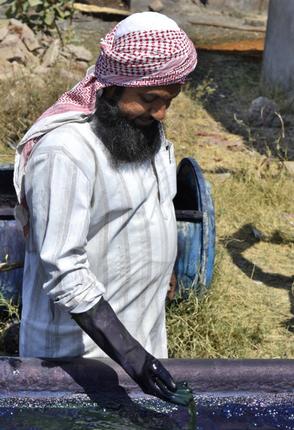
Abdul Jabbar Mohammed Khatri is not a name urban dwellers are familiar with, but many get to wear garments made from the natural-dyed, ajrakh-printed fabric that comes from his workspace in Dhamadka near Bhuj, Gujarat.
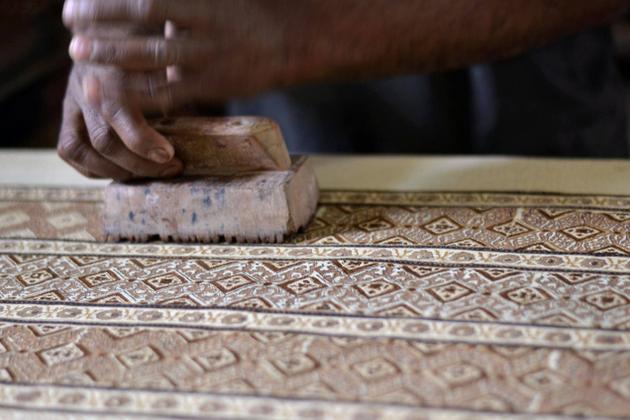
As one enters the muddy lane leading to his workshop, one can spot several metres of fabric, in different stages of dyeing and printing. The workshop has a large outdoor area where water from the borewell is filtered to rid its iron content, a boiling unit where fabric is treated several times during printing and dyeing and a printing room lined with tables and innumerable wooden blocks intricately carved with ajrakh patterns.
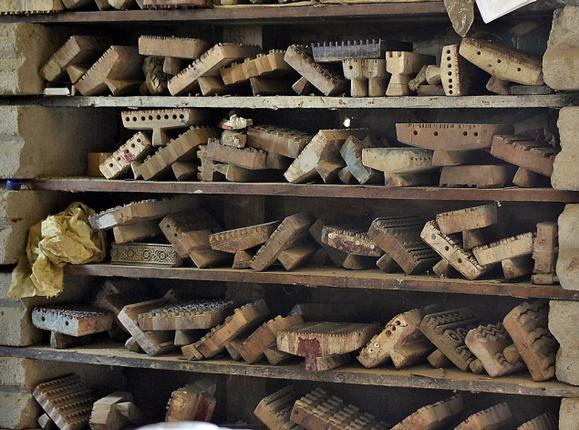
A part of Khatri’s storehouse has stock that has to be sent to Fabindia. He’s a national-award winningajrakh printer and this is the 10th generation of a family of ajrakh printers that moved from Sind to Dhamadka. “Ajrakh requires running water and my forefathers moved here because of the river Saran, which dried up in 1987. Now we draw water from a depth of 200ft and it has more iron content,” he says.
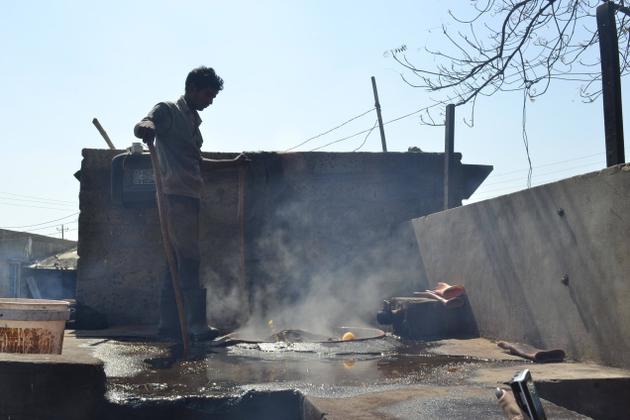
In the initial stage, an indigenous ‘harda’ root is used as a mordant for the fabric (pomegranate skin and acacia nut skin are the other mordants). The ‘harda’, says Khatri, can react with iron in the water and turn the fabric black. “We use a filtering unit that has a bed of sand, coal, small and large stones to filter the water; iron particles gather on top,” he explains.
The dye varies from alizarine, madder or indigo, according to the colour desired. A mixture of lime and gum is used as a resist dye to keep the white portions intact.
Ajrakh printed saris, dupattas and stoles are now a fashion statement. Khatri recalls that a few generations ago, those who reared animals were the primary customers buying lungis and towels. Double ajrakh or printing on both sides, now a niche domain, was done to make the fabric more useable. “If one is wearing a lungi that flutters in the desert wind, one wouldn’t want the inner side to be not colourful,” says Khatri. Double ajrakh requires precision and is done only by master craftsmen.
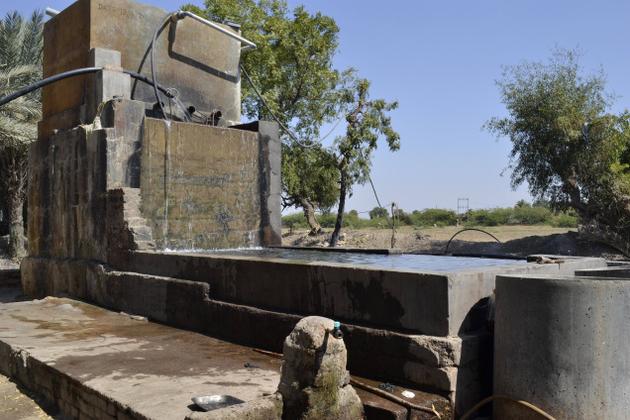
If naturally dyed ajrakh printed fabric comes at a premium, it is because of the work that goes into it. In Ajrakhpur village in Kutch, several craftstmen specialise in block prints. “Each tribe has specificpatterns of ajrakh and communities do not copy patterns,” smiles Khatri.
Jabbar Khatri will be demonstrating ajrakh block printing at the International Workshop on Natural Dyes organised by ANGROU in Hyderabad from March 5 to 7.
Weft, warp and a legacy
Visitors to Bhujodi village near Bhuj would be surprised by the number of award-winning weavers in the village. Among them is Vankar Shamji Vishram Valji, known as Shamji bhai, who will also be participating in the International Workshop on Natural Dyes in Hyderabad next week. He gives us an insight into the Bhujodi settlement and its new quake-resistant and weather-proof houses and looms and moves on to talk about indigenous wool from the sheep he uses for weaving shawls, throws and bedspreads. Shamji bhai’s family weaves a small number of shawls in chemical-dyed, acrylic wool for commercial purposes but the larger focus is on indigenous wool and kala (black) cotton that grows in the area and natural indigo for dyeing.
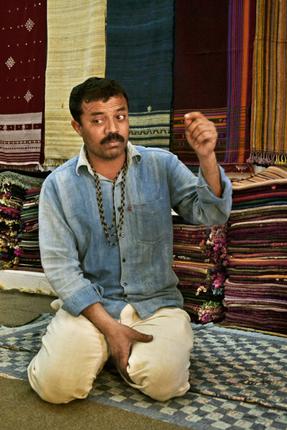
“I get indigo from Auroville and Hyderabad,” he says, showing us his indigo vat, a 3.5ft clay pot placed partially within the ground. “We use excreta of goats at the base to maintain the temperature of the vat. Goats feed on salty leaves and hence their excreta does not attract ants,” he reasons. One of the vats he now uses has a four-year-old indigo dye that gets replenished after each dyeing process. Date, lime and water are added to the vat from time to time. “A vat can be used up to 20 years if it is in good condition. One has to use the vat each day,” he says. These vats, explains Shamji, are smaller than those used in Rajasthan to dye saris.
Shamji and his brothers work in spaces designed with an understanding of wind and sun direction so that they use minimum or no electricity. “We moved here from Rajasthan 10 generations ago, invited by members of Rabari community. The Rabaris are herders and their garments were the yardstick of their wealth,” he explains. Traditionally, Rabaris wore black and white while Ahirs (farmers) wore multicoloured garments. “The Rabaris wear black to mourn the death of one of their kings (the black shawls worn by Deepika Padukone in Ram Leela is an example) and the Ahirs, believed to be descendants of Lord Krishna, like colours,” adds Shamji.
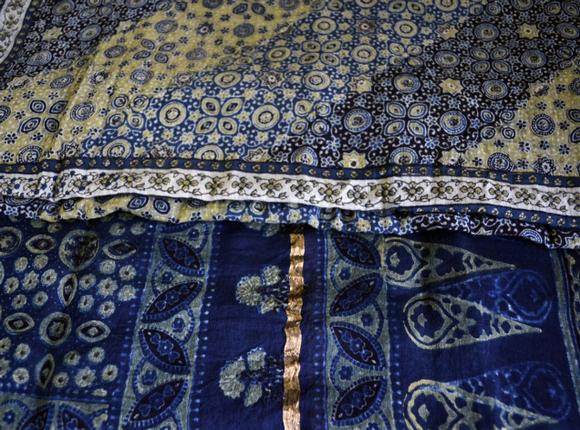
Today, Shamji’s family weaves cotton and wool shawls, stoles and furnishings and has a clientele that extends beyond Gujarat. He shows us prized, award-winning weaves by him and his father, valued at more than Rs. 2 lakh each. “My dream is to open a gallery to showcase such pieces,” he says.
(The writer was in Kutch as part of a textile trail conducted by Jaypore-Breakaway Journeys).
source: http://www.thehindu.com / The Hindu / Home> Features> MetroPlus> Events / by Sangeetha Devi Dundoo / Hyderabad – Bhuj, February 27th, 2014








